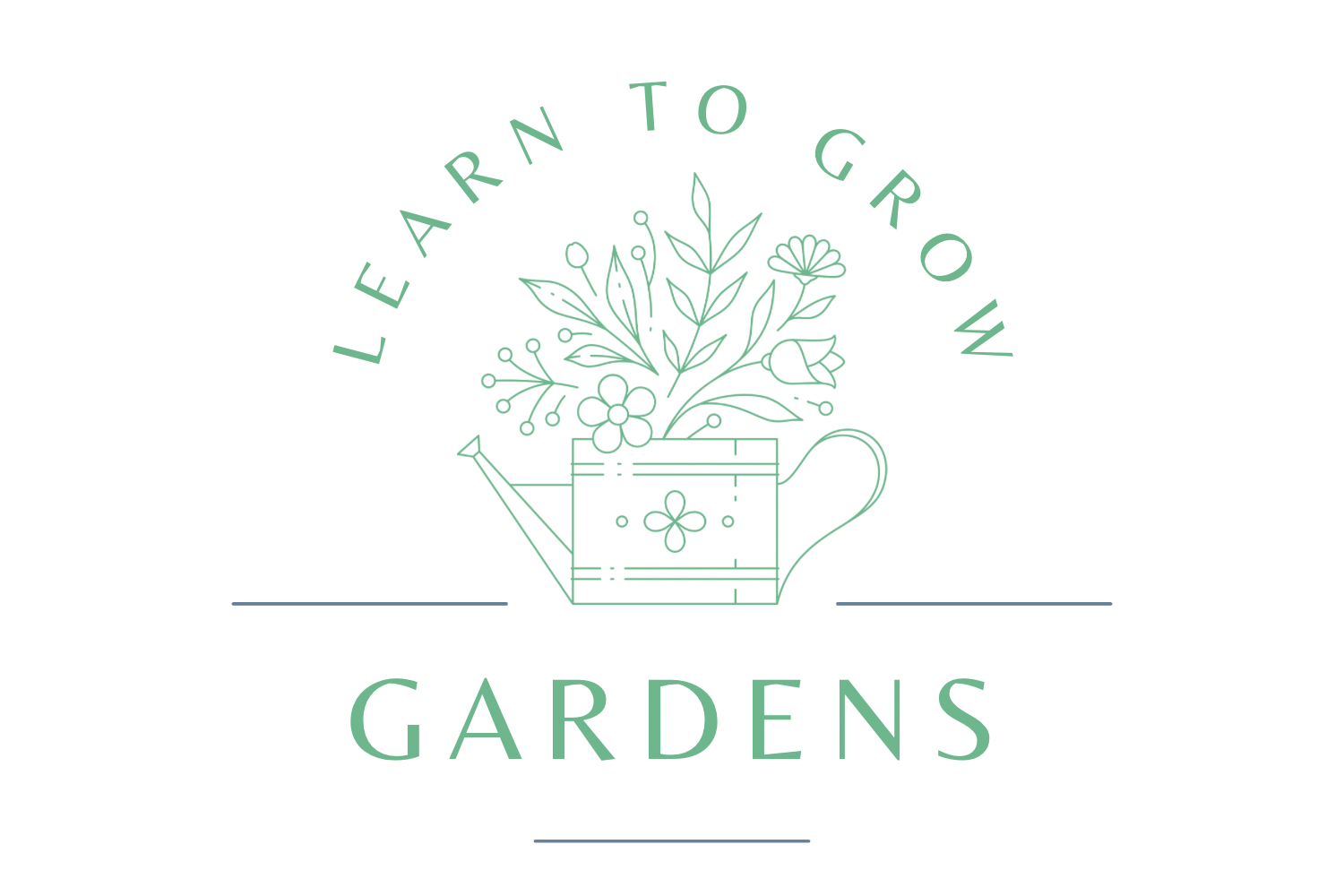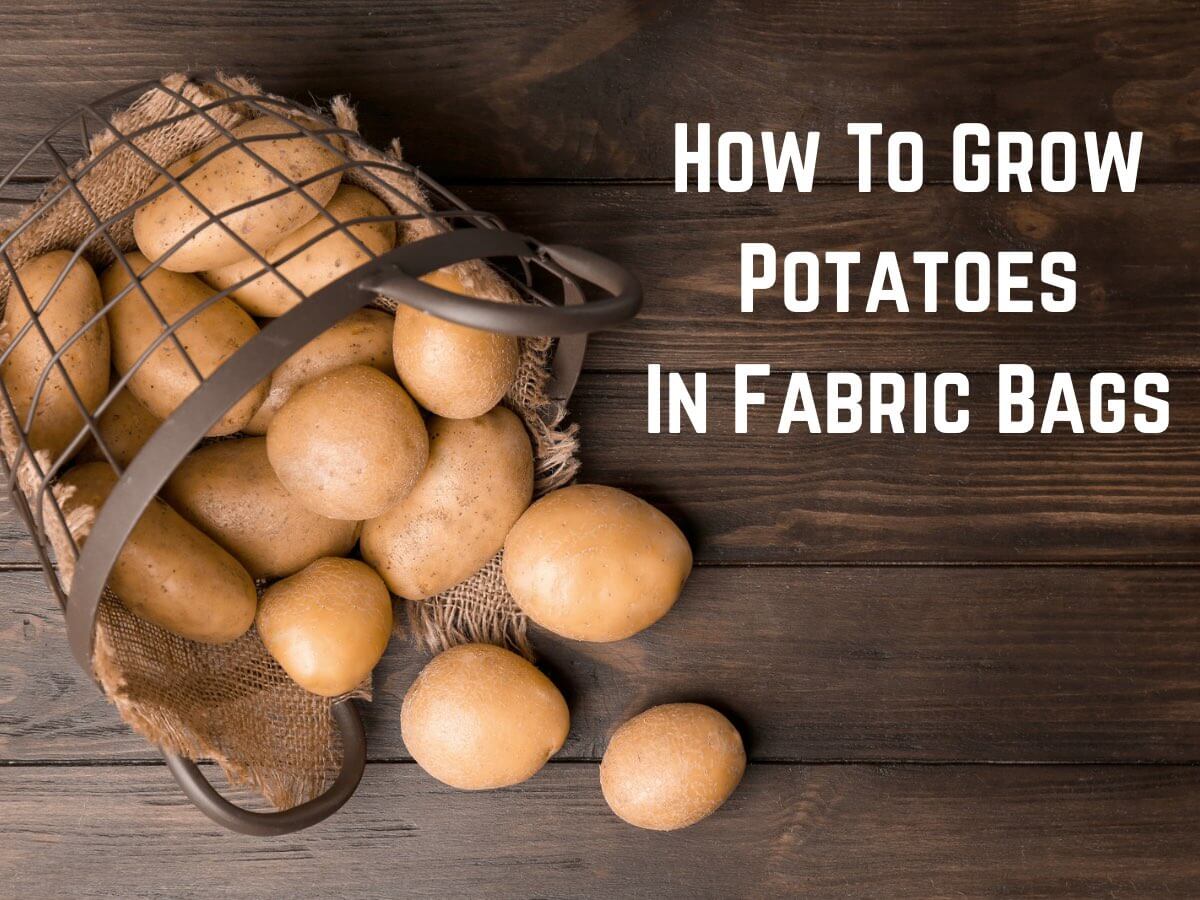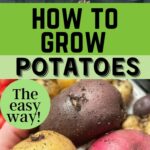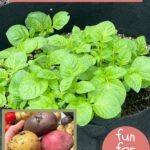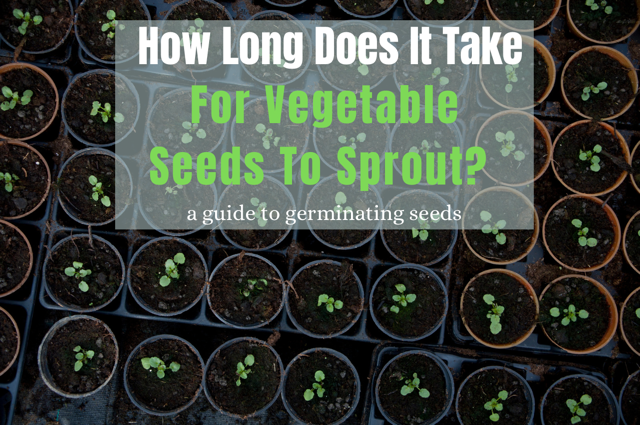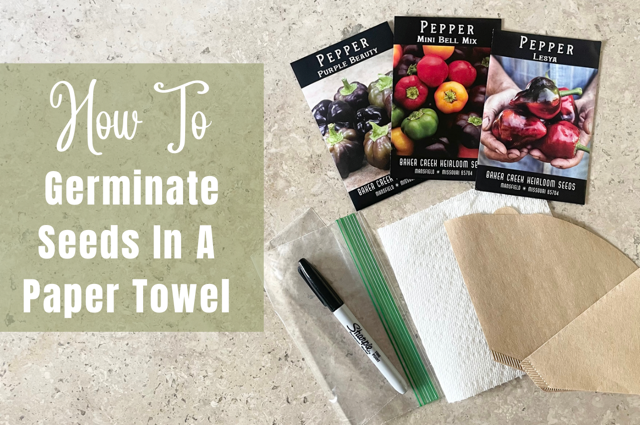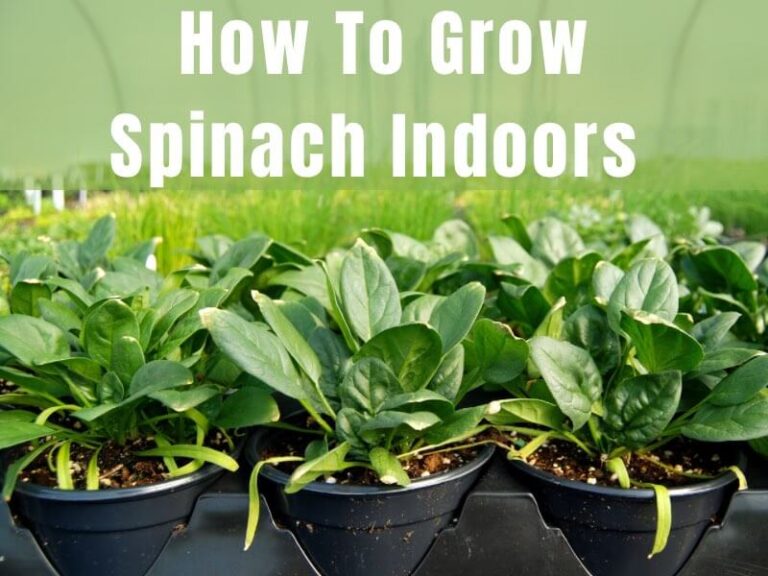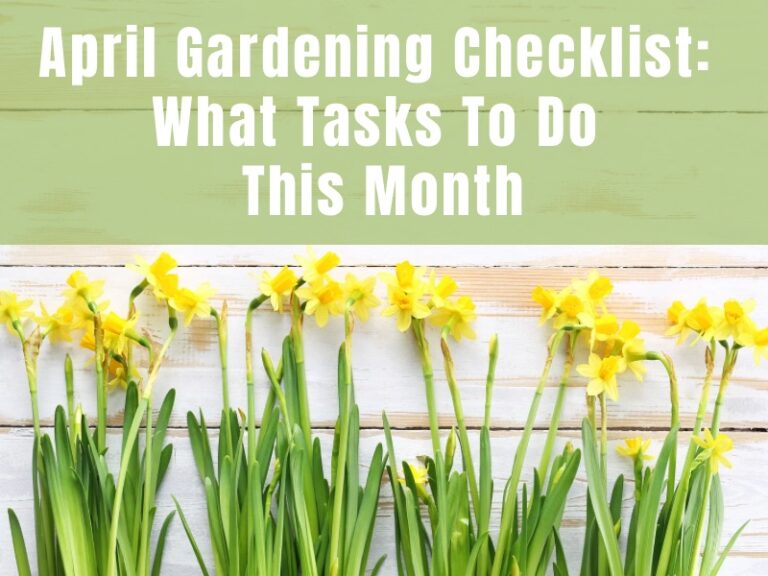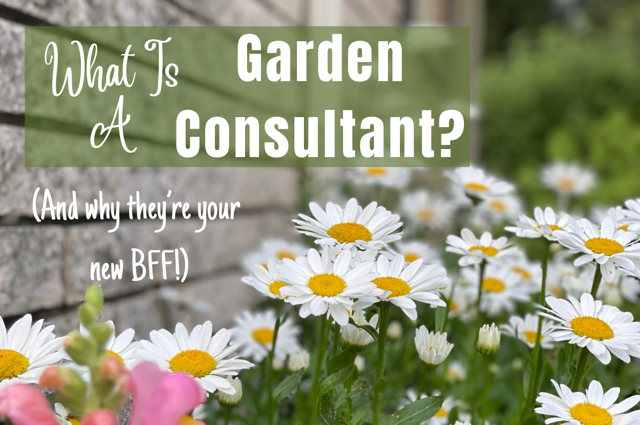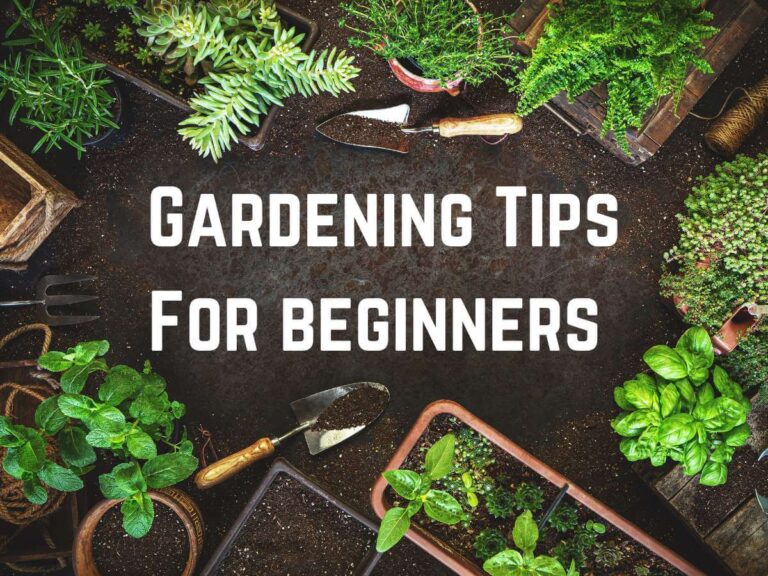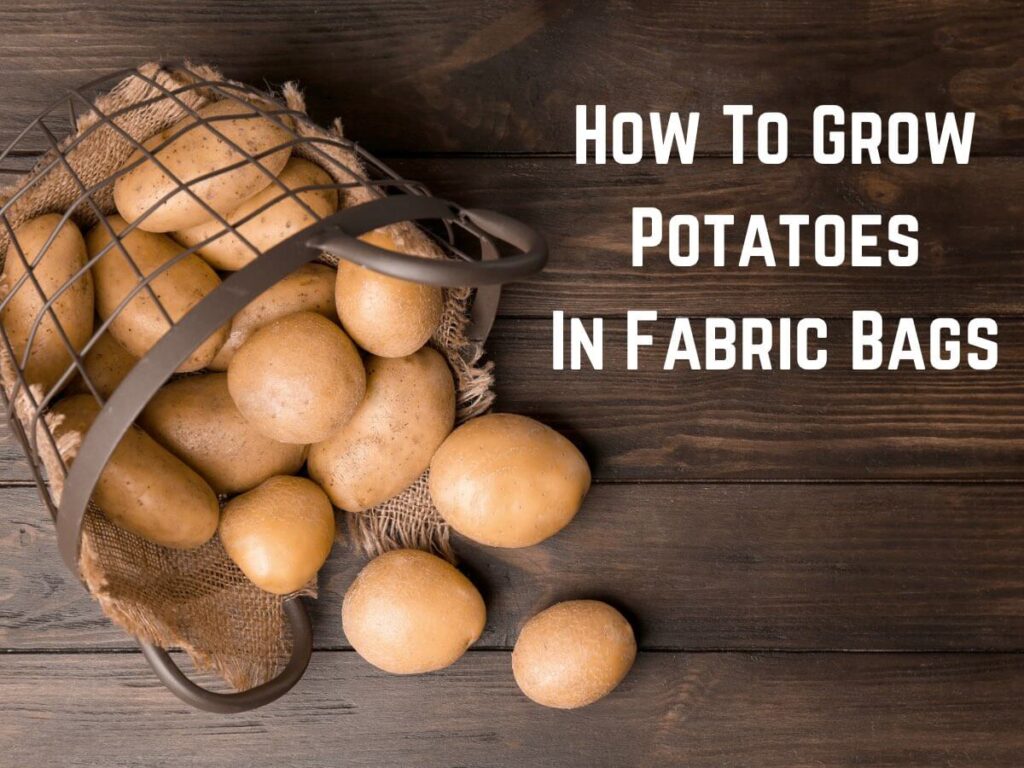
How To Grow Potatoes In A Bag: The Easiest And Most Productive Way To Grow Potatoes
Growing potatoes in fabric grow bags is a super fun way to involve the whole family in the garden. Not only are they easier to care for during the growing season, but harvesting your potatoes is as simple as dumping the bag into a wheel barrow or box and digging them out!
You can also find some fun varieties of potatoes, such as Adirondack blue or red, or Purple Majesty, which grow pink and purple potatoes! They’re also a great way to grow potatoes in small spaces, as the bag don’t take up much room.
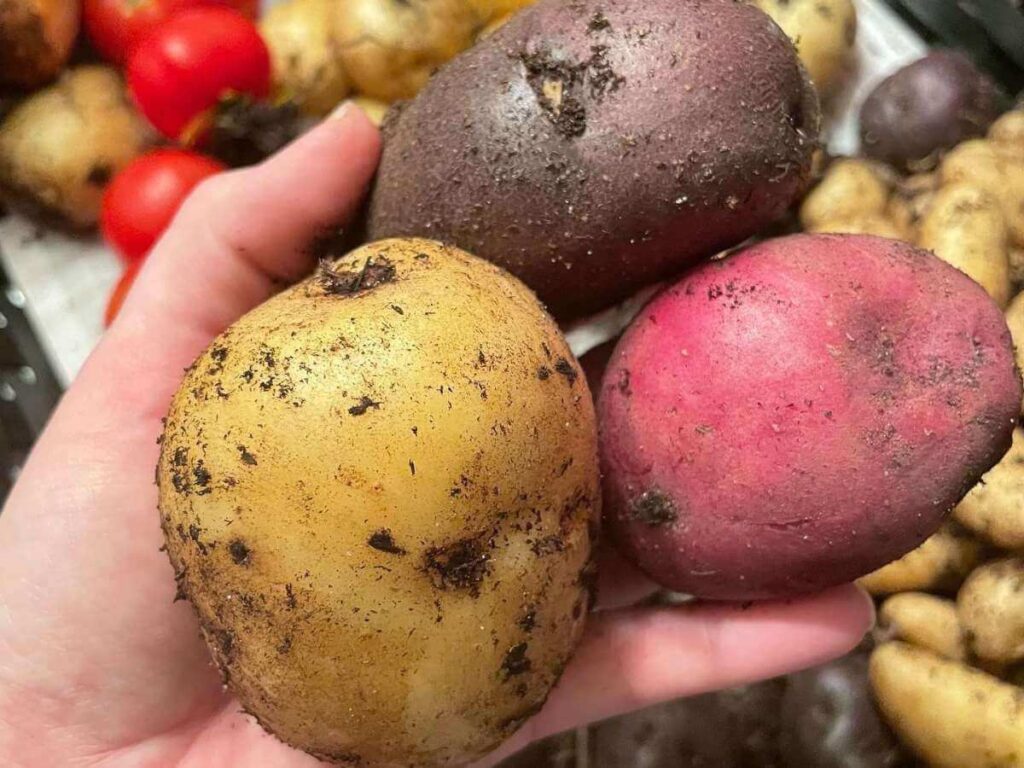
This post contains affiliate links. You can read our full disclosure policy HERE.
Are grow bags good for potatoes?
The short answer is yes, but let me start with a little story.
The first year I tried growing potatoes, I was renting 5000sq ft at a local farm, to grow until my heart was content (yes, it was overwhelming!) I purchased several varieties of potatoes and sweet potatoes, and ended up planting about 40 feet of potatoes. That’s A LOT of potatoes, and couldn’t wait for my harvests in the fall!
Then the rains came. We have a very high clay content to our soil, which means the fields where I planted were a muddy mess, for weeks on end.
I didn’t get a single edible potato and I’m still sad about it! The few that didn’t rot from the rains were eaten by field mice. I’ve learned a few new methods since then, and the perks of growing in fabric grow bags.
Why you should grow potatoes in fabric bags
One huge benefit of growing potatoes in fabric grow bags is the ability to control the moisture surrounding your potatoes and avoiding the possibility of rot. Even with the crazy rains, if I had grown my potatoes in fabric bags I would have had a harvest at the end of the season. The bags allow excess moisture to drain, preventing your potatoes from rotting in soil that’s too wet for too long.
Growing potatoes in a bag also frees up space for other vegetables in a small garden. I leave my bags outside of each raised bed, and use the garden bed for my other vegetables.
Another benefit to growing potatoes in fabric grow bags is the quality of the soil they are grown in. Potatoes are what’s known as a “heavy feeder,” which means they like a super nutrient rich soil. By growing them in bags, you have complete control over how nutrient rich the soil is. Sone people even grow them in straight compost!
Finally, a third benefit is that it’s easier to “hill” your potatoes as they grow. In a lot of potato varieties, potatoes will sprout along the stem of the plant. If you add soil as the plant grows, leaving a few inches of growth above the added soil, potatoes will sprout along the newly buried stem. This method is known as “hilling” and can be done in a bag by adding new soil or compost as the plants grow.
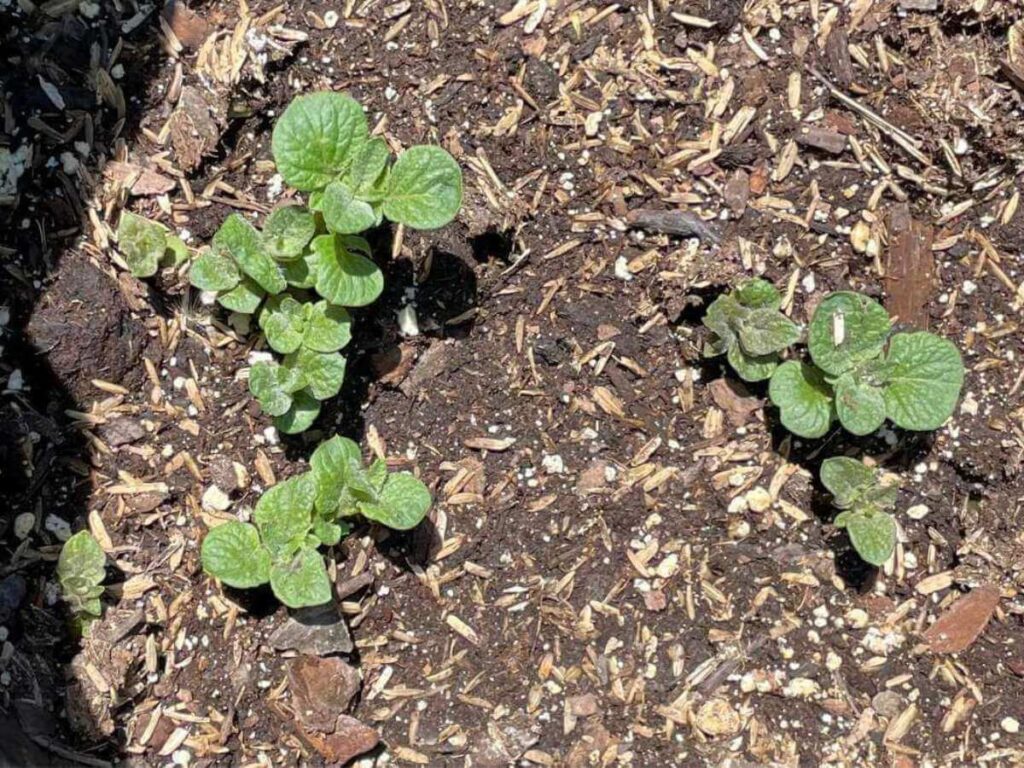
Where to find potatoes for growing
When planting potatoes, it’s best to look for “certified seed potatoes.” These are potatoes that are packaged specifically for growing. They’re free of chemicals to inhibit sprouting, and have been tested and are free from common diseases that can destroy your entire potato crop.
Certified seed potatoes can be found online, and at home improvement centers and garden centers. I’ve purchased mine online, and at Home Depot. I’ve even found them at a local feed store.
Can you use grocery store potatoes to grow potatoes?
The simple answer is yes. Any potato that will sprout can be used as a seed potato.
A few things to keep in mind, when using grocery store potatoes as seed potatoes:
- Use certified organic potatoes. Organic potatoes have not been sprayed with a growth inhibitor, and are much more likely to sprout and successfully grow.
- Grocery store potatoes, even organic ones, have not been tested for diseases that affect planting and growing. Plant more than you think you need, in case you lose some along the way.
- Diseases that affect potatoes can transfer to other members of the nightshade family, such as tomatoes. If this happens, you could lose your entire potato and tomato crops.
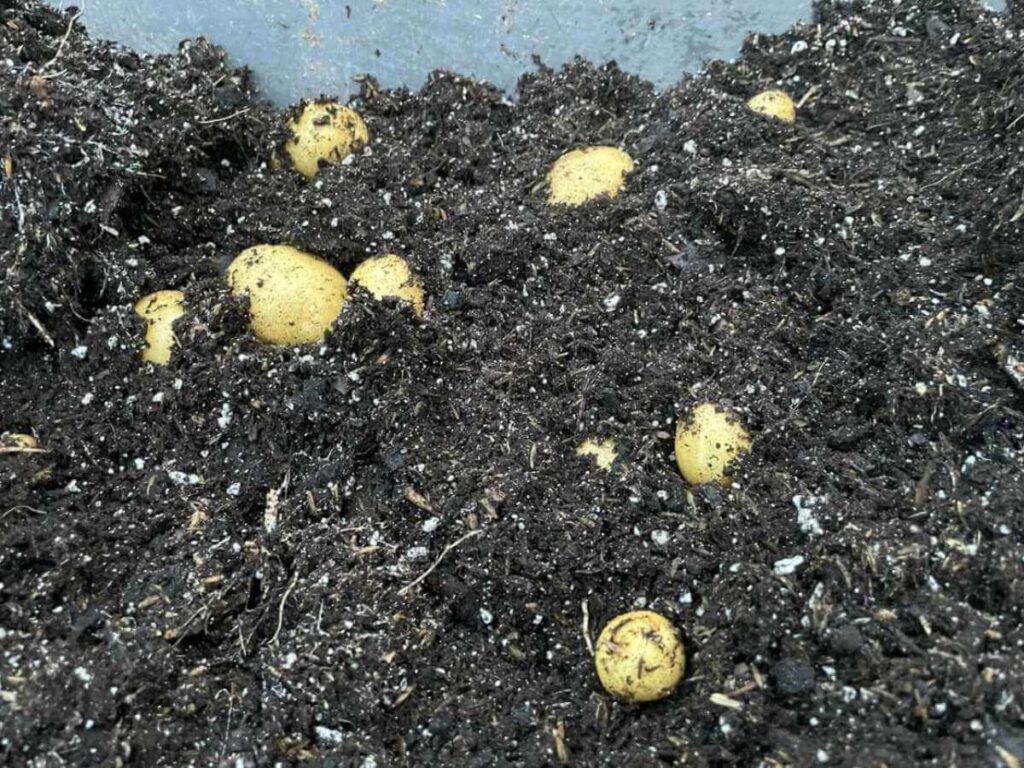
Choosing the right potato varieties
Potatoes come in many different varieties. Some are starchy when cooked, others waxy. Some are red or purple or yellow or white. One of the benefits of homegrown potatoes is the ability to grow any variety you want.
Potatoes also come in early, mid, and late maturity varieties and this refers to the amount of time it takes them to mature.
Early Season Potatoes
Early season potatoes are potatoes that mature faster than late varieties. Early varieties mature around 85 days after planting, on average. These include:
- Adirondack blue
- Adirondack red
- Irish Cobbler
- Purple Majesty
- Red Norland
Mid-season potatoes
Mid-season potatoes mature around 100 days from harvest. These include:
- Austrian Crescent
- Yukon Gold
- French Fingerling
- Gold Rush
- Purple Viking
- Ida Rose
Late season potatoes
late season potatoes mature around 115 days from harvest. These include:
- German Butterball
- Red Maria
- Elba
- Canela Russet
What month do you grow potatoes?
Potatoes are fairly cold hardy, and can be planted in spring 2 weeks before your last frost date. For most areas, potatoes are planted in March through May, and harvested July through September. In areas with mild winters, potatoes can be planted again in the fall.
To get a head start on your planting season, time the chitting of your seed potatoes 3-4 weeks before your last frost. Freshly planted potatoes can tolerate a few freezes and snow after they’ve gone into the garden.
How to grow potatoes in fabric bags
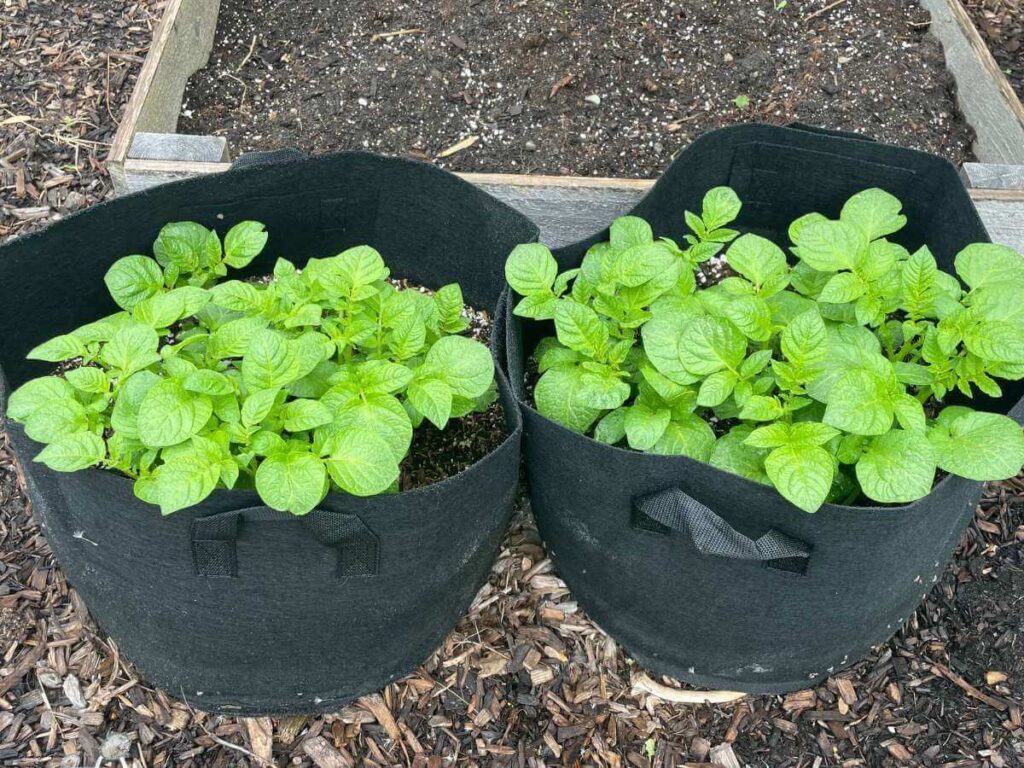
Supplies needed:
Seed potatoes
Grow bag ( I’ve used bags like these)
Potting soil or topsoil
Compost
Coconut coir (this is what I use. I also use it for my DIY Seed Starting Mix Recipe and propagating plants!)
- Prepare your potatoes by leaving them in a bright, warm room for several days so they can begin sprouting. This is known as “chitting”
- Choose good quality fabric bags. I’ve also heard of people using reusable shopping bags, old rice bags, or burlap sacks. You can even use large plastic buckets, if you provide good drainage holes.
- Mix the compost and topsoil together. For each bag, I use 1 part topsoil to 1 part compost. I then add several handfuls of coconut coir in, to lighten the mixture up a bit, but you can skip this step if you don’t have any on hand. Add a 4 inch layer to the bottom of the bag. Lay potatoes with the sprout side up. For a 10 gallon bag, I use 5 potatoes. For a 20 gallon bag, I use 10 potatoes.
- Cover your potatoes with 3-4 inches of the compost/topsoil mix, and water them in well. Place them in an area receiving full sun.
- Watch for little sprouts to appear in the surface of the soil. This should take a couple of weeks. When the sprouts are about 3-4 inches tall add another 2-3 inches of compost. Repeat this as they grow until you’re 4 inches from the top of the bag. Add a 2 inch layer of mulch on top to keep potatoes near the top from bulging through the soil and turning green.
- Keep your potatoes watered, but not damp. You don’t want them to rot! If you’re unsure if they need watered, stick your finger in the soil about 2 inches. If it feels dry, they could use a good watering.
- Your potatoes will flower, and may even grow a fruit that resembles a tomato. DO NOT EAT the fruit or foliage of a potato plant. They’re poisonous. After 8-10 weeks or so, the foliage will die back. This is when your potatoes are ready, and it’s harvest time!
- Dump the potato bag that contained your potato plants into a large cardboard box or wheelbarrow, and dig out your spuds! Each potato plant, on average, will yield 8-14 potatoes of various sizes.
- Potatoes are ready to eat as soon as you harvest them. If you won’t be eating them right away, cure them in a dark, damp place for 10 days. A cardboard box with a few damp paper towels in a well-ventilated but warm room would work. They should last 3-4 months if allowed to cure. Any potatoes that shrivel or sprout in storage can be used to start new potato plants in the Spring!
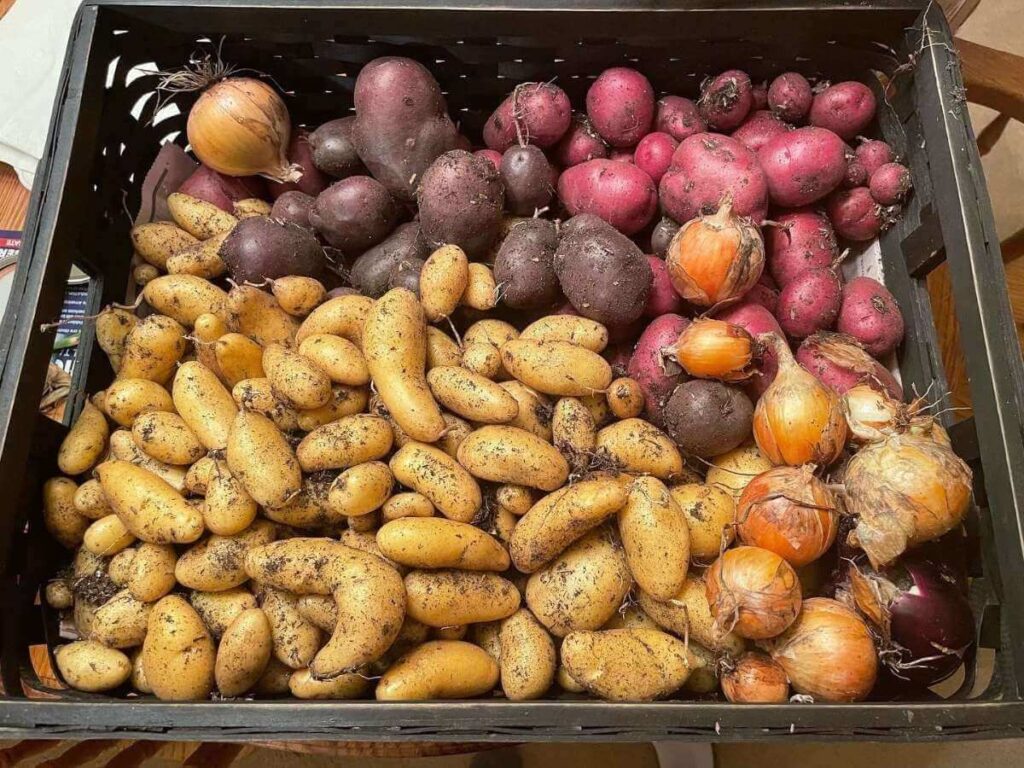
FAQ’s About Growing Potatoes
Can you harvest potatoes before the foliage dies back?
Yes, you can harvest potatoes before the foliage dies back, but wait 2-3 weeks after the plant has flowered. After this time, you will have baby potatoes, or new potatoes.
Can I use garden soil in the bags to grow my potatoes?
It’s not recommended to use garden soil in the bags for growing potatoes. Although potatoes can be grown directly in the ground, soil placed into a bag can become compacted and will lower your overall harvest.
Do potatoes need fertilizer?
Potatoes are heavy feeders and require a lot of nutrients. Personally, I have had excellent potato harvests using lots of compost/organic matter as my only source of nutrients, but some home gardeners swear by the addition of an organic fertilizer. If you choose to use a fertilizer, select a 10-10-10 balanced fertilizer for organic vegetable gardening and apply at planting time, and again halfway through the growing season.
Another option is to apply fish emulsion. Mix 1 tablespoon fish emulsion in a gallon of water and water your potatoes every 2-3 weeks.
Can I reuse the soil from my potatoes for next year?
Soil from potatoes has a possibility of carrying fungal diseases from this year’s crop of potatoes. Each year that you reuse the soil, this likelihood will increase. It’s a good idea to reuse the soil elsewhere in your garden, for plants unrelated to potatoes, to reduce the spread of any diseases that could destroy future potato crops.
You may also like:
FREE printable seed starting chart
What is a garden consultant (and why they’re your new BFF)
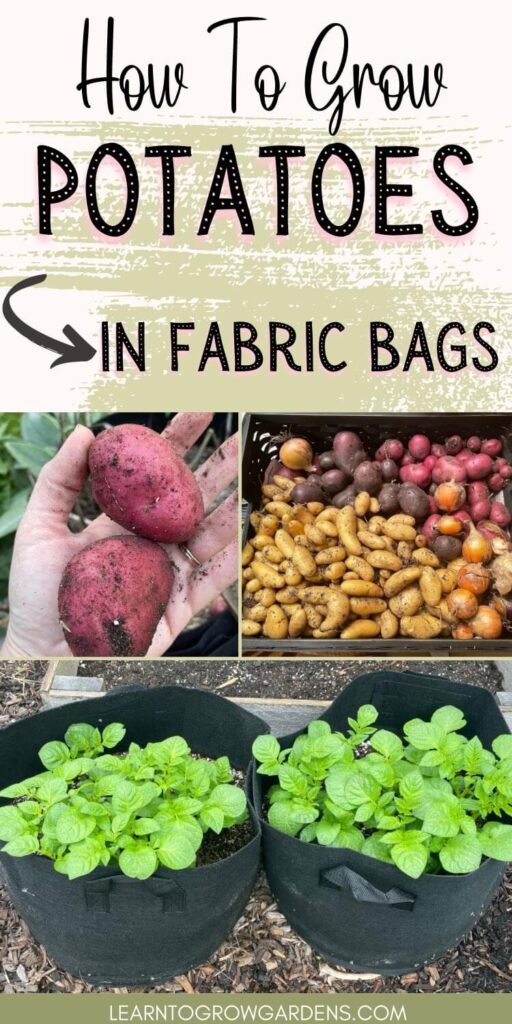
As an Amazon Associate, I earn from qualifying purchases.
